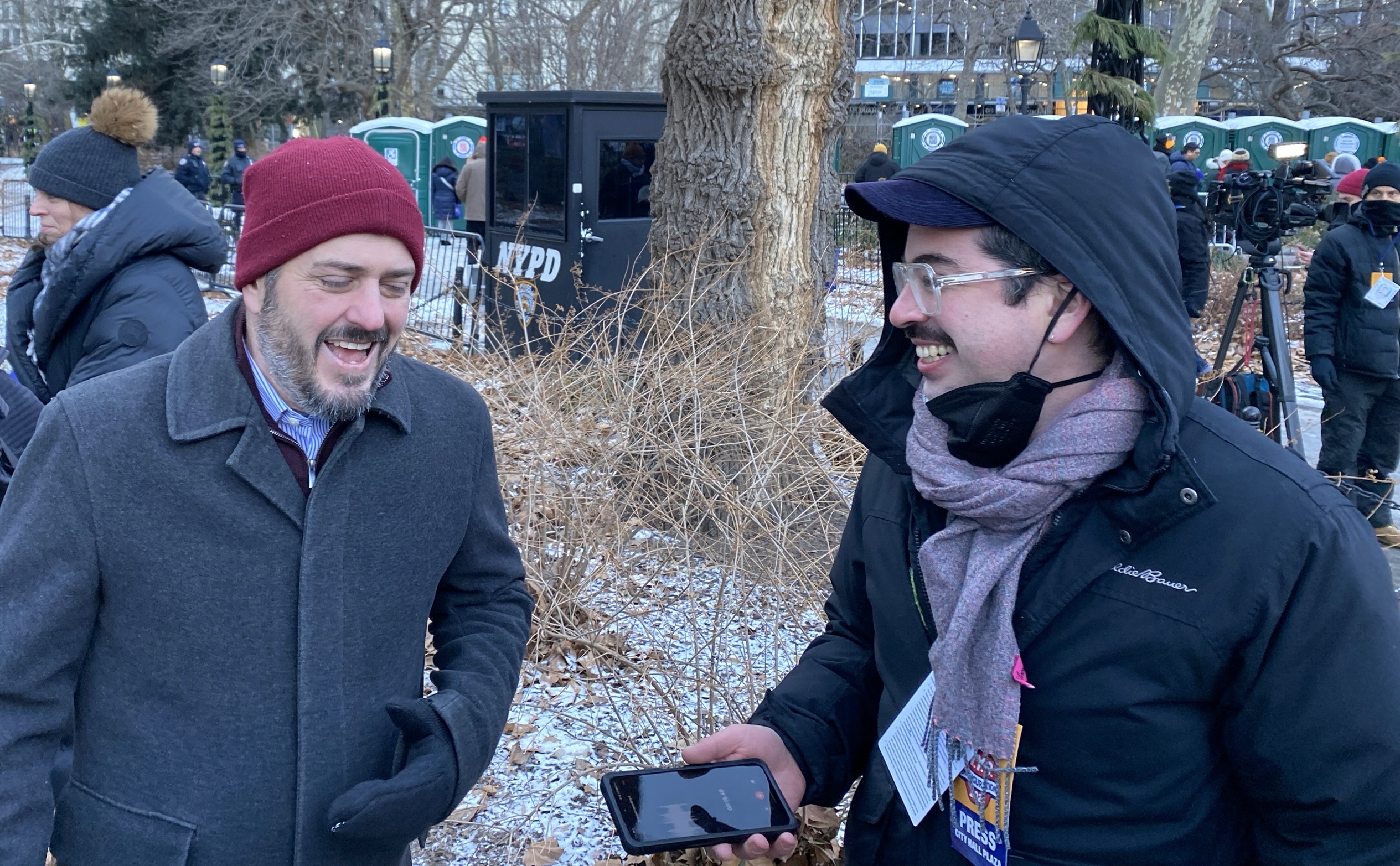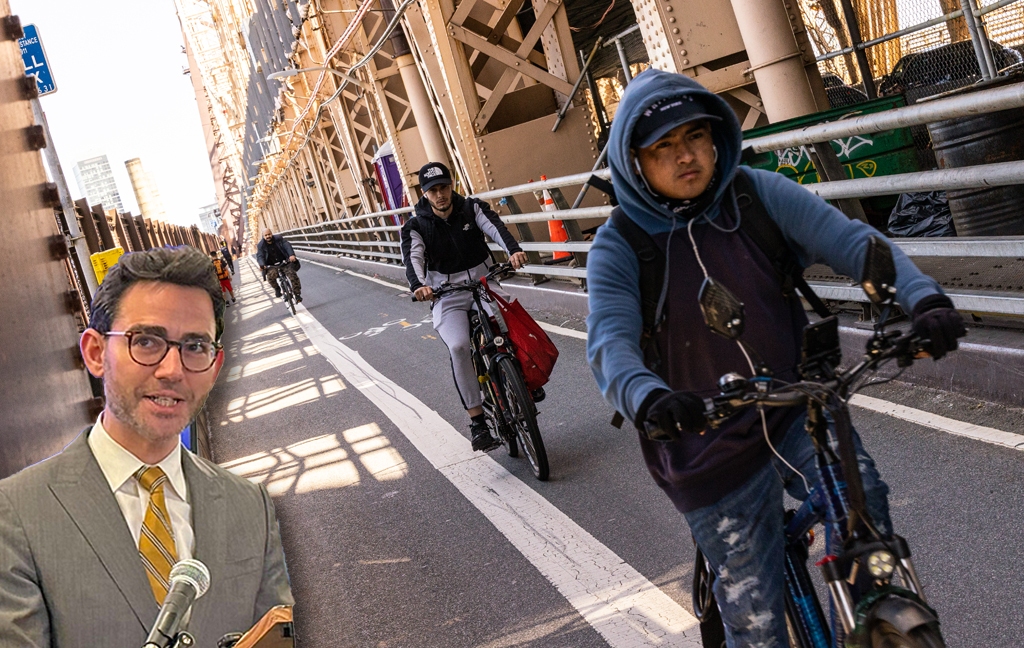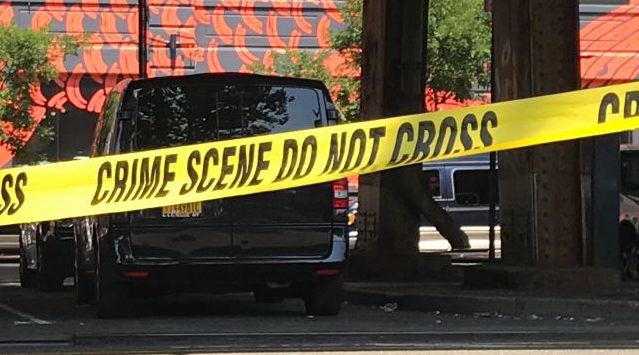
A map presented by Lee Sander shows routes of short-term transit improvements (slide available in this PDF).
MTA chief Elliott "Lee" Sander delivered the first-ever "State of the MTA" address this morning, using the agency's 40th anniversary to urge the enactment of the full $29.5 billion, five-year capital plan unveiled last week. Speaking before a packed house at Cooper Union's Great Hall, Sander argued that the New York metro region needs every tier in the plan to serve a growing population, keep up with global competition, and address the challenge of climate change.
Sander linked the plan to the historical trajectory begun in the early 1980s, when the MTA rolled out successive five-year capital plans, reviving a decrepit system with a $70 billion overhaul. The capital plan now on the table, he said, would "turn the page to the next chapter in New York City's transit history" and create "a world-class, seamless transportation network."
Sander also reinforced the importance of congestion pricing to the MTA's plans, and placed major capital projects within the context of the city's sustainability initiatives. "Inherent in the capital plan and in congestion pricing is the belief that sustainability is critical to the region's future," he said. "Global warming and sea level rise are challenges no enlightened society can afford to ignore."
The presentation depicted three categories of improvements: 1) short-term service enhancements that can be implemented before congestion pricing, 2) major projects in the 2008-13 capital plan, and, looking ahead as far as 2048, 3) long-term system extensions for the five boroughs and surrounding counties that the current proposal would make possible.
The first category will consist of new bus routes in every borough and more frequent subway service on 11 lines. In the second category, big-ticket projects like the Second Avenue Subway and East Side Access -- linking the LIRR to Grand Central -- take center stage. The third category, which Sander called a "long-term vision and action plan for the next 25-40 years," includes ideas like using the Second Avenue Subway as a trunk line for service into Brooklyn and the Bronx, and building a "circumferential" subway line connecting Brooklyn, Queens, and the Bronx using existing rail rights-of-way (an idea first proposed by the Regional Plan Association). A detailed summary is available in the MTA press release, and City Room has posted a great recap.
Transportation advocates were largely positive, though not without reservation, in their assessments of the speech.
"It was a smart thing for the MTA to do," said Neysa Pranger of the RPA. "Any opportunity they can take to pitch
their program is a good one. It's going to need the energy and
enthusiasm of the people in that room to get the capital program
through Albany."

In the MTA's long-term vision, the Second Avenue Subway (yellow) will serve as a trunk line extending to routes in upper Manhattan and other boroughs (blue).
Noah Budnick of Transportation Alternatives said Sander made a compelling argument. "They explained how much investment has already gone in, and what that has done for the system. I heard a case made for why past investments have worked, and why we need to keep investing or else the system's going to go downhill."
A cautionary note came from Joan Byron of the Pratt Center for Community Development. With commodity prices rising and the region's economy on shaky ground, she said, "it all adds weight to the argument for doing things to expand the system incrementally." The Pratt Center and its partner, COMMUTE, have been advocating for more BRT in the capital plan to make sure neighborhoods underserved by transit see a greater, more immediate benefit. "East Side Access has a lot of benefits," Byron said. "But you could value-engineer money out of that and deliver miles and miles and miles of BRT."
In a Q & A following his speech, Sander was asked if the MTA planned to implement BRT lines that cross bridges, which would directly connect the outer boroughs to Manhattan. "In the five corridors that we're doing with DOT, none of those go over bridges," he said, "but I wouldn't rule it out."
Graphics courtesy of the MTA





